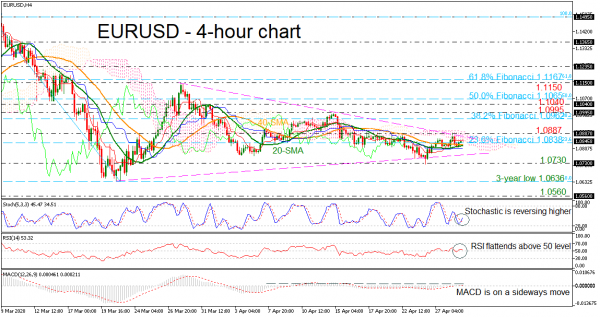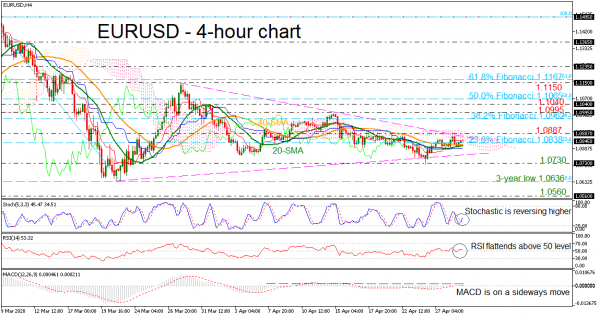EURUSD has been trading within a symmetrical triangle formation since March 20, with a break outside it likely to determine the next trend direction. Moreover, the price rebounded after it found support near the uptrend line and the 1.0730 support, enhancing the argument that the picture may not be entirely negative at the moment in the very short-term.
Technically, the price surpassed the 20- and 40-period simple moving averages (SMAs), entering the Ichimoku cloud. The stochastic oscillator is heading north after the bullish cross within its %K and %D lines in the 4-hour chart. However, the RSI and the MACD indicators are continuing to lack direction as they are flattening near their neutral levels.
If the bulls retake control, price advances may stall initially near the 1.0887 strong resistance barrier, which stands near the descending line of the triangle. A potential upside violation of this line would take the pair towards the 38.2% Fibonacci retracement level of the down leg from 1.1495 to 1.0636 at 1.0962. In such a case, the 1.0995 and the 1.1040 levels would increase the likelihood of more advances before meeting the 50.0% Fibonacci of 1.1065.
On the other side, in case of a drop beneath the SMAs and the triangle formation would re-visit the 1.0730 support, which acts as strong support for the bears. Penetrating this line could endorse the negative picture again, testing the three-year low of 1.0636 and, even lower the 1.0560 support, identified by the low on February 2017.
Summarizing, EURUSD is in a sideline mode and in a trendless market, so any strong move either to the upside or to the downside could give a signal for the next trend in the 4-hour chart.



 Signal2forex.com - Best Forex robots and signals
Signal2forex.com - Best Forex robots and signals




